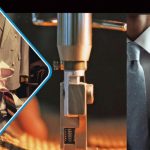 There is a growing need for the industry to design special testing programs to create awareness of how to properly choose a test method, interpret the results, and use the results in product marketing. It is important for you to know how your textile product will perform for your end users irrespective of where you are in the supply chain. It is necessary that you understand the basics of textile testing so that you can better inform your customers and promote your product. For example, what textile test methods apply to your product, what are the performance specifications that define your product and the difference between standard and non-standard testing.
There is a growing need for the industry to design special testing programs to create awareness of how to properly choose a test method, interpret the results, and use the results in product marketing. It is important for you to know how your textile product will perform for your end users irrespective of where you are in the supply chain. It is necessary that you understand the basics of textile testing so that you can better inform your customers and promote your product. For example, what textile test methods apply to your product, what are the performance specifications that define your product and the difference between standard and non-standard testing.
The rapid growth of advanced textiles, nanocomposites and nanofibers in the industry has led to the development of user-friendly instruments that can be placed on site to make visual characterization of fibers and nanofibers accessible specially when the dimensions are shrinking. The quality assurance would essentially involve understanding the parameters relevant for different markets where nanofibers and/or performance fabrics are used including fiber diameters and pore sizes etc. Hence, the actual behavior of a fabric in a tensile fabric structure will depend on selecting a suitable test method that can help in providing factors of safety (FOS) for designing safer structures. The performance of compression garments used in sports and fitness activities as well as in the medical field for a variety of applications, including the reduction of swelling and muscle stiffness must undergo relevant testing and analysis to verify claims associated with their functionality while marketing of these garments.
Advanced textiles have performance attributes such as wicking, compression, heat-reflecting and energyharvesting properties. The nature and magnitude of some of these properties may be determined through several existing standard tests but that may not be sufficient to capture the performance features that distinguish a product from its competition. For some emerging advanced textiles, standard tests may not even exist making it challenging for manufacturers and brand owners to develop test-method to supplement their product development activities. This is where customized testing can be used to support product development efforts and advertising claims.
Testing methods based on new technologies are now available to combat counterfeiting, fiber adulteration. Advanced industrial-scale methods of DNA analysis are now available for DNA marking and supply chain authentication.
Today, silver-based advanced medical textiles are widely used to prevent the spread of infections, as well as to accelerate the healing of grievous wounds. Cutting-edge silver-based products include powerful antimicrobial treatments. More than 70 percent of consumers are willing to pay a premium for odor control, especially in athletic apparel and footwear. But they want the products to be safe, to be made responsibly, and to work even after washing. Therefore, antimicrobial manufacturers must possess good understanding of how efficacy testing in the lab translates through the fabric mills to actual product performance. They should have credible product claims that don’t confuse consumers and for technologies that are effective, durable, and sustainable. The industry must develop the standards by which to measure and test effectiveness as well as to ensure compliance with applicable regulations.
Ultimately, the consumer’s experience with the final treated product is the only test that really matters. And to ensure that products pass that most critical evaluation, we must have an optimal and accurate testing program.
G.D. JASUJA
Managing Editor




